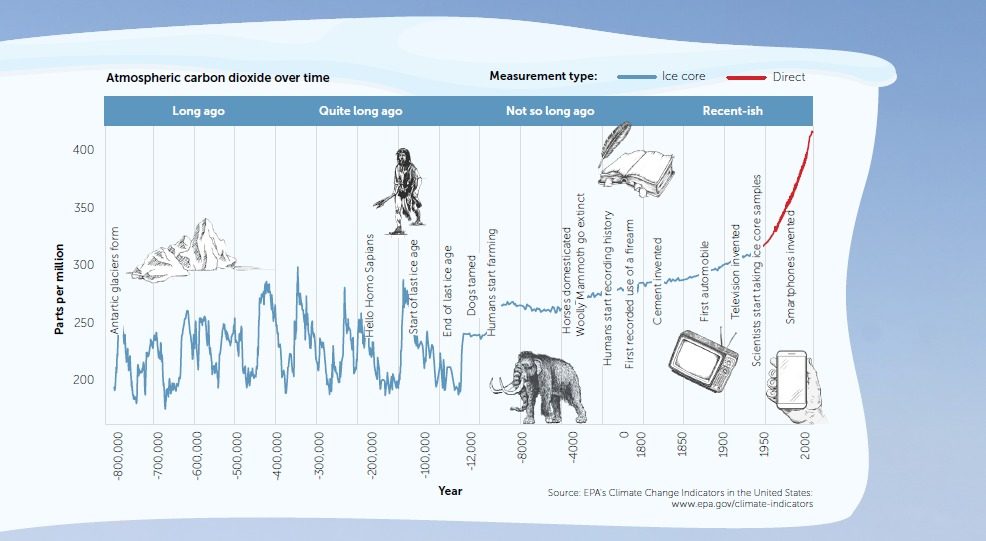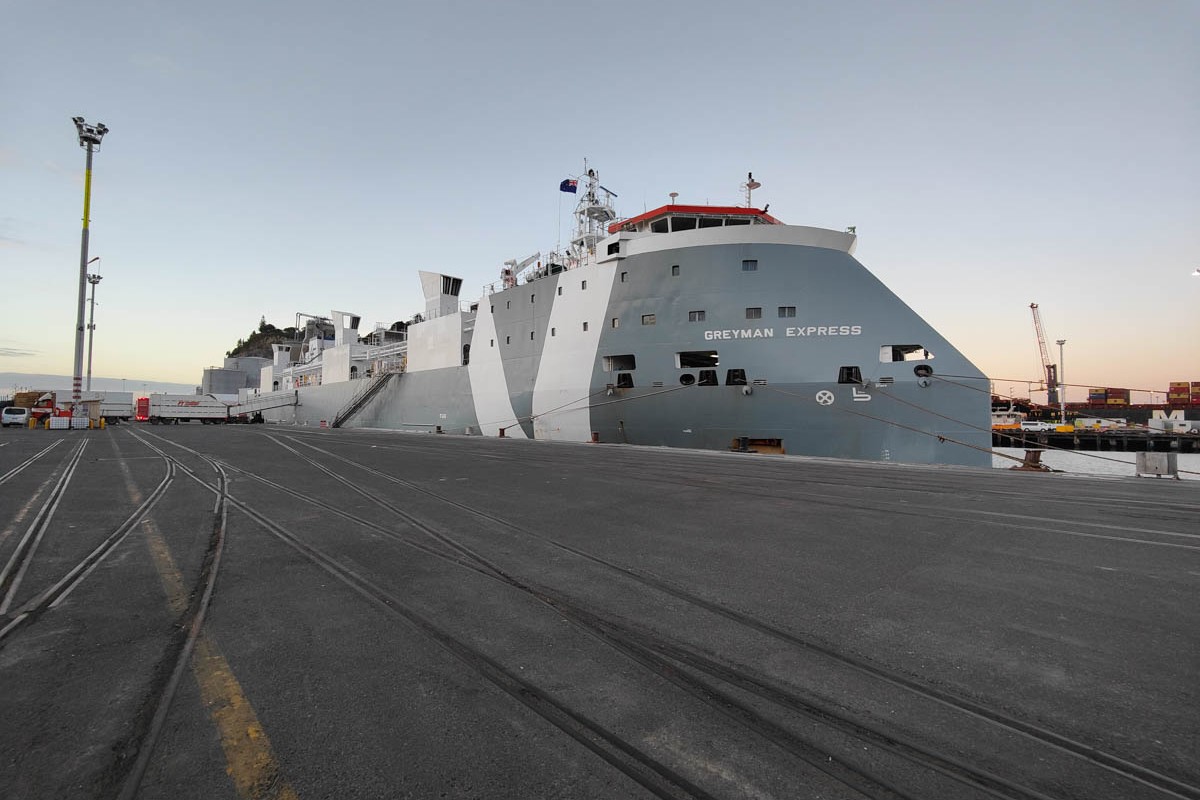Beginners’ guide to climate change research
Overcoming a specific form of writer’s block, Nicola Dennis sorts through the nuts and bolts of human awareness of climate change.

Overcoming a specific form of writer’s block, Nicola Dennis sorts through the nuts and bolts of human awareness of climate change.
Climate change. Could there be a bigger buzz kill? I’ve been encouraged numerous times over the years to write something on climate change. My computer is filled with half-finished drafts, but I’ve always pulled the pin. It’s too complicated. It’s too political. It’s too depressing and my poor little brain is not trained in climate science.
If we have crossed paths professionally, you might be thinking “wait, isn’t your name stamped on a bunch of greenhouse gas modelling stuff?” and yes, it is. But, the agricultural side of things is fairly simple.
Pasture absorbs carbon dioxide from the atmosphere, livestock eat the pasture and produce a reasonably predictable amount of greenhouse gases (most notably methane and nitrous oxide) as well as the tasty meals, cozy fibres and useful byproducts that pay the bills.
Without new methane-busting technologies (and possibly letting dicyandiamide, DCD, back off the naughty seat) then the greenhouse gas calculations for New Zealand agriculture are fairly simple; the more pasture consumed, the higher the emissions.
If you don’t have a pre-existing beef with animal agriculture, then there’s not that much to fight over. Everybody is striving towards the most efficient use of pasture whether their primary motivator is profit, animal welfare, or environmental impact.
If the climate change problem was limited to Kiwi agriculture, it would be solved by now. But, outside the farm gate there is a bewildering wasteland of fossil fuels, political pledges, competing ideologies, energy crises, wishful thinking, grifters, and greenwashing. And if Captain Planet intends to show up to fix this mess, then he is taking his sweet time getting here.
So how about you and I take a deep breath and try to get our head around some of the science?
When did we start caring about carbon emissions?
I have been curious about when the climate change panic bells started ringing. Some say the alarm was raised by T.C. Chamberlain in 1899 which I found oddly reassuring. Somehow the thought of humanity investigating/ignoring the issue for more than 120 years makes me feel less culpable.
I love to dredge up historical science literature.
Back then, writing was the only way to express yourself and the old dudes really knew how to craft a manuscript.
Plus, in the biological papers I am more accustomed to, the authors often masterfully describe experiments that would lead to prison sentences today. All that is to say that T.C Chamberlain’s 1899 paper “An Attempt to Frame a Working Hypothesis of the Cause of Glacial Periods on an Atmospheric Basis” is an exquisite read, if you are used to consuming today’s dry and emotionally vacant science papers. But, I couldn’t find any explicit warnings about the burning of fossil fuels in the paper’s 40 pages.
Back then, the major question was how to explain the geological evidence of ice ages in the earth’s history. What was causing the earth to cool? Was it caused by the earth wandering off into a cool patch in space?
Not exactly, says Chamberlain who does a good job of distilling the chemical properties of rocks, marine wildlife and atmospheric gases (hard won evidence stemming from holding test tubes of gas in the sunlight and measuring the infrared radiation of moonlight) into a working hypothesis that natural fluctuations in the amount of carbon dioxide slowly warm and cool the earth.
Chamberlain points out that large deposits of coal indicate there were periods long ago when carbon accumulation was outpacing carbon release. But he seems to stop short of saying “maybe don’t put all that carbon back into the atmosphere”.
To be fair to Chamberlain, this paper was only written five years after the invention of the automobile and 75 years after the invention of cement. The idea that humans would seek to burn every last drop of dinosaur was probably not on his radar.

Global cooling crisis
As far as I can tell, it was G.S. Callendar in 1938 who was the first scientist to postulate that burning fossil fuels was heating things up. Armed with some historical carbon dioxide levels and temperature records, Callendar fought against the conventional wisdom that the ocean was helpfully absorbing all humanity’s carbon dioxide emissions. His contemporaries argued that the amount of carbon dioxide in the land and sea vastly outweighed the amount in the atmosphere, ergo the ocean eats our waste.
Despite being on the right side of history, the tone of Callendar’s paper is more “yay humans are staving off the next deadly ice age” rather than “maybe we should stop and think about what we are doing”.
Climate change research picks up throughout the 1950s and 60s as methods for measuring gases improve. But during this time, smog and acid rain are presenting a real issue. In fact, the smog was blocking sunlight and causing a global cooling effect. If humans couldn’t get on top of their sulphur dioxide emissions (the chief cause of smog) then we were sending ourselves into the next ice age.
The mainstream media, predictably, misunderstood the time frames involved for the next ice age and pretty much told everyone to grab their snowsuits. Anyway, humanity works out how to stem some of its coal use and invents nifty things like catalytic converters and adBlue etc to reduce sulphuric emissions from cars. The global cooling crisis is solved.
A victory for mankind! Except fixing this problem really takes the brakes off for global warming. There was also the hole in the ozone layer to fix too so that humans wouldn’t be fried by ultraviolet radiation. Team Humans kicked that problem’s butt, but ozone (while very helpful) is also a greenhouse gas.
By the 1980s the smog had cleared and it was time to start panicking in earnest about rising temperatures. In 1988 the Intergovernmental Panel on Climate Change (IPCC) was formed and has been churning out gigantic, soul-destroying reports since then.
How is global temperature assessed?
The temperature side of things is definitely a brain teaser. A few degrees in either direction is the difference between the next ice age or desiccating the land. In fact, there are apparently pathways for global warming to trigger the next ice age by melting too much ice at once and disrupting the temperature distribution of the earth. We don’t have time to school up on ocean currents and advance thermodynamics.
Let’s just get our heads around how they assess global temperature. So, I think we can back ourselves to work out how temperatures are measured. Thermometers in weather stations etc. But because temperatures vary so widely from place to place and season to season, what is reported is the temperature anomaly. That is how much warmer or cooler is today’s temperature than the “average”.
The average is often the past 30 years of data for that station at this time of year. But it can sometimes be relative to a different time point. NASA’s earth observatory reports temperatures relative to 1951-1980. An extra degree or so in my hometown Dunedin, no big deal. A nice change even.
The whole world taking on enough heat to bring the average ocean temperature up by a couple of degrees is a big deal because of winds and currents and ice and, um, stuff and things.

When dinosaurs roamed earth
How they estimate global temperature and greenhouse gas levels in prehistoric times is interesting. It involves digging very deep holes and pondering over the things they find down there. A pastime many farmers also dabble in.
The Antarctic ice core experiments involve tunnelling through 3km of ice to measure gases that have been trapped for up to 800,000 years. Sounds cool (pun intended). The age of the samples and the global temperature at the time are estimated by measuring isotopes.
I spent hours revisiting my very dusty chemistry knowledge to bring you the next few sentences so I would like you to cherish them.
Basically, the chemical elements that we know and love like carbon, oxygen, hydrogen (and all their friends that we had to memorise off the periodic table) can have different forms that do the same thing but are different weights because they pick up or lose neutrons.
For the purpose of this explanation the chemical elements are farm utes and neutrons are the crap you store in them. You and your neighbour might both have Hiluxes. They look and act the same. But you’ve had yours for longer so it’s filled with more baling twine and pipe fittings. If the weather is warm, both cabs will start filling up with ice cream wrappers and empty drink bottles. From careful observation we can estimate how long a farm vehicle has gone between mechanic visits by the amount of clutter it has accumulated.
If that is too voodoo for you, there are also fossils.
It is possible to predict, say, the amount of carbon dioxide millions of years ago by counting the amount of stomata (the organs used for gas exchange) on fossilised leaves. The more carbon dioxide that is around, the less work plants have to do to get it into their leaves. Or you can track the whereabouts/extinction of temperature-sensitive animals in the fossil records.
If we track back to the time of dinosaurs, millions of years ago, carbon dioxide levels were very high. Up in the thousands of parts per million which is much higher than the 650ppm projected for the year 2100 if we don’t get our act together.
The plants were ginormous and the hot weather was perfect for monster-sized lizards. So I guess the good news is that, contrary to popular belief, the planet itself is not in danger. The bad news is that the fossil records are littered with mass-extinction events where climate changes have extinguished the majority of life on earth.
Well now, see that wasn’t depressing at all.
Searching for a positive end message
No wait I can turn this around. I will find a positive message.
You and I will (probably) die of old age before the end game kicks off. No, I don’t know enough about climate switch points to promise that but look at all the cool things humans have achieved in our brief time in existence. Humans go from “I wonder if wireless telephones are possible” to “Hey Google, fetch me a drone” in a blink of an eye. We’ve got a fighting chance.
As I write this, a company has just announced that they are going to start synthesising flour using carbon dioxide sucked directly from the atmosphere. Quite literally manufacturing things from thin air. And, I have just discovered a very reassuring podcast called “39 Ways to Save the Planet”.
Yeah, we’ll sort this out.




